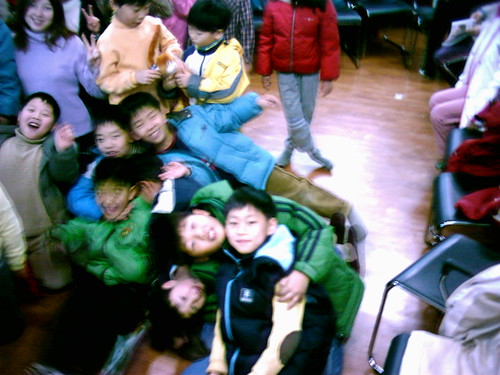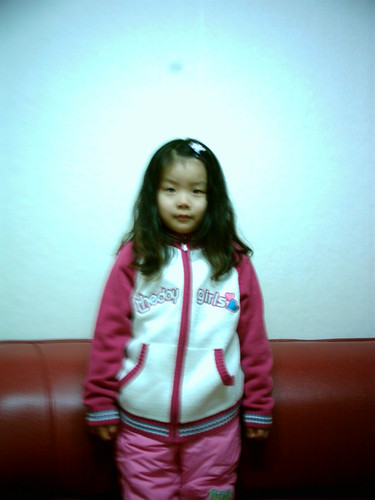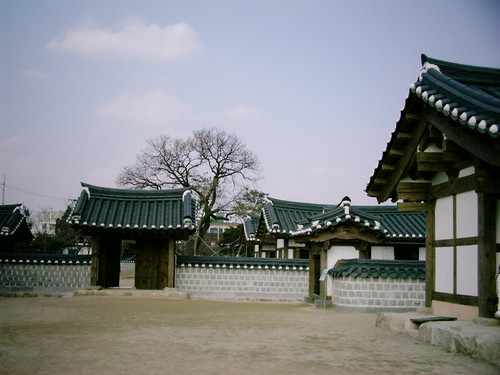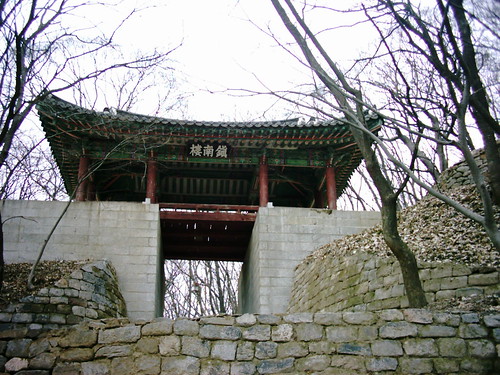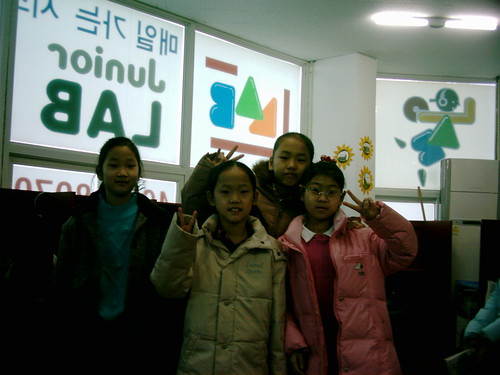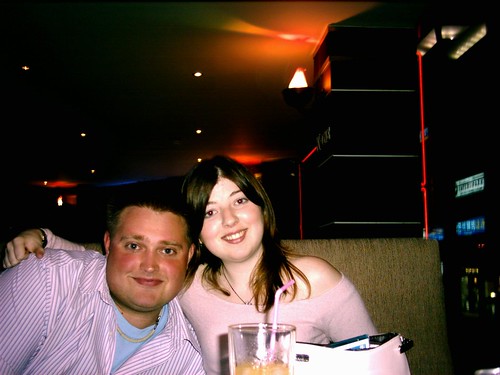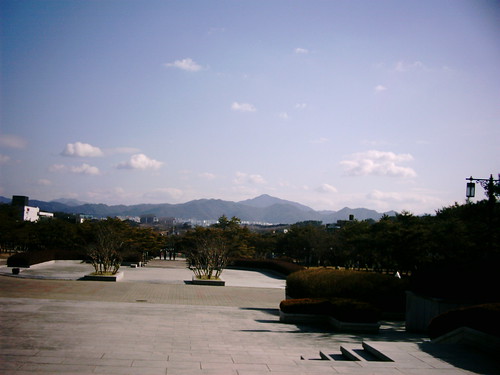Title of this blog gives link to the tombs
Yesterday The Boss informed me that today and tomorrow will be spent as a holiday...Too bad he did not tell anyone sooner, as I have already made plans with someone to go to Junju on Saturday when these 4 days of holidays could have been better spent disappearing off somewhere that takes ages to get to (which, incidently, applies to most of the interesting stuff in Korea). Moreover, I would have been able to inform Jan-Nim in good time that I will not be teaching or participating in Gomdo training today and tomorrow, so I am locked into keeping my adventures on a small scale. On the up side, I got my pay a day early...yey!!!
After rushing off from teaching the kids at Gomdo, I jumped into a taxi and asked for the ferry terminal. When we got there the taxi driver found out that there are no ferries going to the local island at this time of year, so I had to change my mind on the spot. Flicking through my Lonely Planet guide at record speed, I settled on visiting Gonju, as it is in the neighbouring province (north of Gunsan) and has many interesting things to see, including a river, a museum, a temple, a fortress and some tombs. The taxi driver kindly mounted his trusty stead and stole me away to the bus terminal forthwith.
After several bus changes (there is no direct route) ie Gunsan to Junju to Soogong(?) to Gonju, I finally arrived there at 4.15, having embarked on my journey at 12.30. Realising that it was far too late to fit all of this into one day, I chose to see the tombs, as so far I have already been to a so-called fortress, two temples and a museum here in Korea. The tombs were something different.
When I got there (by this time it was 4.30), I discoverd that the tombs are now housed within an information centre. I grabbed a leaflet (written in English) and walked round the information centre taking photos, as I did not see a sign telling me that it was forbidden (nor does it state that in the leaflet).
Overview of the Tomb of King Muryeong
King Muryeong reigned between 501-523 until his death at age 62, and was the 25th king of the Baeke Dynasty. During his reign he promoted the welfare of his people and greatly increased the nations strength and international status. His rule laid the foundations for the great developments that took place under the rule of his son, Seong-Wang (ruled 523-554).
The tomb was discovered by accident during some drainage work in 1971. A tunnel like enterence leads to the main chamber, both of which have arched ceilings lined with black bricks decorated with lotus designs. The east, south and west walls have flame-shaped niches for lamps. The king was laid in the eastern part of the main chamber while the Queen was laid in the western part, both with their heads pointing south.
To the people of this period, death was not the end; the tomb was prepared for the reincarnation of both the King and his Queen. The tomb was made comfortable for the spirits of the King and Queen until it was time for their reincarnation. Jewelery, (inc gold ornaments for crowns and caps, ear pendants and bracelets) clothing, pottery and other important and/or useful possessions were buried with the King and Queen.
The Kings sword, with a dragon hilt (the symbol of his status and power) was found lying at his waist, and a pottery figure of a guardian pig was placed in the tomb. Mock windows were built in the tomb to create an illusion of comfort for the awaiting spirits.
The most important items believed to excavated are two stone plates engraved with records of the burial. According to the plates, the King died on the 7th day of the 5th month of the lunar in 523, and was buried 3 years later on the 12th day of the eight month of 525. The Queen died in the 12th month of 526 and was later buried on the 12th day of the second month of 529.
2906 objects of 108 categories were excavated from the tomb. Twelve items have been designated as National Treasures.

This is one of the mock windows in the main section of the tomb.

Aforementioned sword found at the King's waist.

"By the hairs on my Chiny Chin Chin!" Pig guardian placed in the tomb to chase away evil spirits.

National treasure No. 161 This bronze mirror (one of 3) is decorated with 4 divine animals. Mirrors such as these were a symbol of a kings authority rather than for actual use.
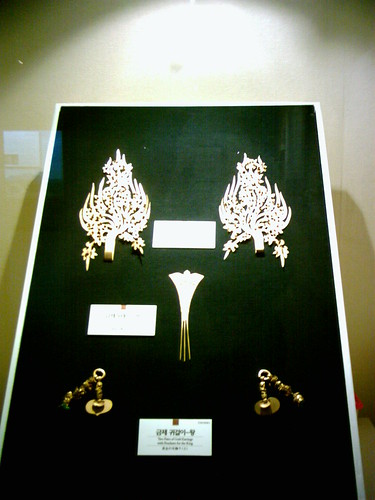
This is a showcase of some of the Kings Jewelry. At the top are two thin sheets of gold in the form of flames adorned with honey suckle. These were to be attached to crowns and caps, and were worn by the Kings of this dynasty. The Queen has a similar flame design, but without the honey-suckle.

Taken from inside tomb 6. This is a wall painting of one of the Four Spirits:Blue Dragon (Cheongryeong), White Tiger (Baekho), Red Phoenix (Jujak) and Black Turtle. The Phoenix is flanked by the Sun, the Moon and the Cloud. Not sure what this one is, but it could be the Dragon. These four animals can also be found in the tombs of the South China Dynasties.

Taken from inside Tomb 5

This is a mock-up of the main chamber of the Kings tomb, the floor adorned with treasures. If you look carefully, you can see the ghost of the late king....ok, I admit, it's the reflection of the show case behind me (showing the queens clothing). Ooooh, that's me too!!!
Due to my camera's limited storage capacity this is all I managed to take photos of.
There are many things to see and do in this city...I am so glad I have discovered it. Another day I will probably visit the museum, and then visit the temple and fortress when the weather warms up...the surrounding landscape of Gongju is magnificant, and my website should be graced with photos of it.
Its 1.49am and I still haven't decided what I am going to do tomorrow!







